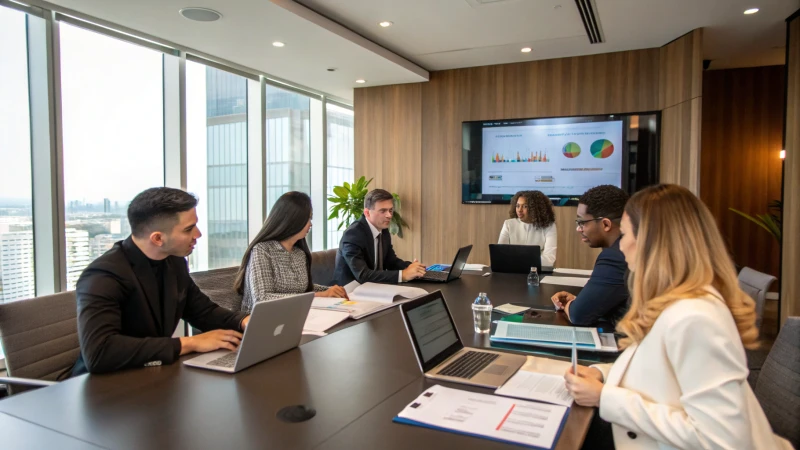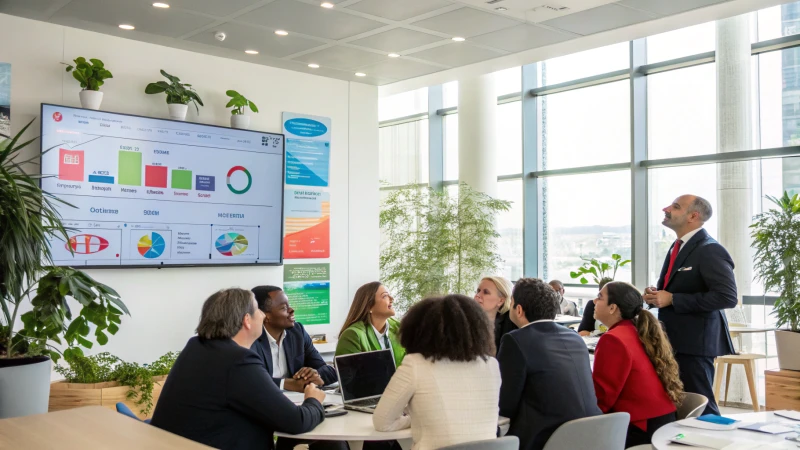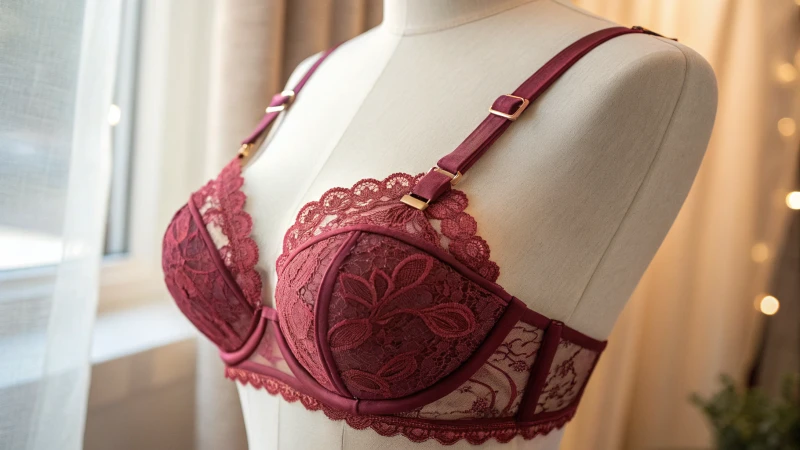
Have you ever trusted someone without really knowing them, only to be let down?
Vendor vetting is crucial for long-term partnerships because it ensures suppliers align with your company’s quality standards, ethical practices, and logistical needs, reducing risks and building trust.
I remember one time when I jumped into a partnership without doing my homework. It was like going on a blind date, hoping for the best but preparing for the worst. Unfortunately, I found myself dealing with delays and subpar products. That experience taught me the hard way how vital it is to thoroughly vet vendors. This process not only saves you from potential headaches but also lays down a solid foundation of trust and mutual understanding. By ensuring that your suppliers share similar values and standards, you can focus on what truly matters: growing your business together.
Vendor vetting minimizes risks in B2B partnerships.True
Proper vetting ensures suppliers align with company standards, reducing risks.
Skipping vendor vetting leads to increased trust.False
Without vetting, trust is compromised due to potential misalignment and risks.
What makes a vendor vetting process truly effective?
Navigating the vendor vetting process can be like steering a ship through unpredictable waters, yet it’s vital for ensuring smooth business operations.
An effective vendor vetting process is a mix of evaluating financial health, ensuring quality, checking compliance with standards, and monitoring ethical practices. This involves setting clear criteria, conducting thorough assessments, and maintaining ongoing relationships to foster reliable partnerships.

When I first started in procurement, I learned the hard way that not all vendors are created equal. One of my early experiences involved a supplier whose financial instability disrupted our entire supply chain. Since then, evaluating financial stability has been a non-negotiable part of my vetting process.
Financial Stability Evaluation
Understanding a vendor's financial health is crucial to ensure they can deliver consistently over time. I usually dive into their financial statements, credit reports, and past performance data. Tools like D&B reports1 offer invaluable insights into a company's creditworthiness.
| Criteria | Description |
|---|---|
| Financial Reports | Analyze balance sheets and income statements. |
| Credit Scores | Use credit ratings to assess reliability. |
| Payment Histories | Evaluate previous transactions for consistency. |
Quality Assurance Standards
Ensuring product or service quality is non-negotiable for me. I remember once visiting a vendor's site and realizing their production didn’t meet our standards, despite their claims. Since then, confirming adherence to industry standards and relevant certifications has been essential.
- Certifications like ISO standards2 set benchmarks for quality.
- Conducting site visits allows me to observe production processes firsthand.
Compliance with Ethical Practices
Aligning with vendors who share my ethical values protects my business's reputation. I always look into their labor practices, environmental policies, and regulatory compliance. Platforms like EcoVadis3 help me evaluate sustainability practices.
Setting Clear Criteria
Developing a checklist of must-have qualities and nice-to-have attributes helps me maintain consistent evaluations across potential vendors. Creating a weighted scoring system has been especially helpful in quantifying qualitative assessments.
- Mandatory: Certifications, financial health.
- Desirable: Innovative capabilities, past collaborations.
Ongoing Monitoring and Relationship Management
After selecting a vendor, I ensure there's a framework for continuous evaluation and communication. Regularly scheduled meetings and performance reviews help keep us aligned.
Using a vendor management system4 streamlines communication and feedback loops.
A comprehensive vendor vetting process doesn’t just shield my business from supply chain disruptions; it also builds partnerships founded on trust and mutual success. By integrating these elements, I've managed to cultivate resilient supply chains that adapt to changes and challenges effectively.
Financial stability is crucial for vendor vetting.True
Evaluating financial health ensures vendors can consistently deliver services.
Vendor vetting ignores ethical practices.False
Ethical practices are key in vendor selection to protect reputations.
How Does Vendor Vetting Mitigate Supply Chain Risks?
Ever wondered how businesses keep their supply chains running smoothly without hiccups? It all starts with vendor vetting.
Vendor vetting reduces supply chain risks by ensuring suppliers meet quality standards, align with ethical practices, and comply with logistical requirements. This process prevents disruptions and protects brand reputation.

The Importance of Quality Standards
Ensuring suppliers meet your quality standards is fundamental in vendor vetting. This involves inspecting the vendor's production processes and materials to guarantee they meet your specifications.
For instance, a business focusing on sustainable production methods5 can assess if a supplier uses eco-friendly materials or adheres to industry regulations. This step might seem tedious, but it’s the backbone of ensuring consistent product quality.
Evaluating Ethical Practices
Ethical considerations include labor practices, environmental impact, and corporate governance. A company should evaluate a vendor's adherence to ethical standards to avoid negative publicity and legal issues.
I once asked a potential supplier about their labor conditions and environmental policies. Their answers not only reflected their corporate governance but also revealed their commitment to social responsibility. It’s important to have a checklist ready—questions about labor conditions, sustainable resources, and compliance with environmental laws can save you from future headaches.
Logistical Requirements and Timelines
Understanding a supplier's capacity to meet logistical demands is key to maintaining smooth operations. Vendor vetting should involve assessing their ability to meet production timelines and delivery schedules.
A well-prepared logistics plan6 can highlight potential delays, allowing businesses to adjust strategies accordingly. Creating contingency plans based on these assessments has been a game-changer in maintaining smooth operations.
| Aspect | What to Assess |
|---|---|
| Quality Standards | Material quality, production process |
| Ethical Practices | Labor conditions, environmental impact |
| Logistical Needs | Production capacity, delivery timelines |
Building Trust and Accountability
By evaluating vendors on these fronts, businesses can build trust and accountability. This strengthens partnerships and ensures long-term stability in supply chains.
Through years of experience, I've found that vendor vetting is key to building trust and accountability. Companies can use supplier scorecards7 to measure performance regularly and make informed decisions about future collaborations.
By thoroughly evaluating these aspects, I've been able to not only avoid supply chain disruptions but also foster healthier business relationships. This holistic approach ensures that both parties are aligned in terms of values related to customer satisfaction, sustainability, and innovation.
Vendor vetting ensures suppliers meet quality standards.True
Vendor vetting involves inspecting production processes and materials.
Ethical practices are not part of vendor vetting.False
Evaluating ethical practices is crucial in vendor vetting.
Why is Vendor Vetting Crucial for Brand Reputation?
Ever thought of vendor vetting as your brand's secret weapon? It’s not just a checkbox; it's your frontline defense for reputation management.
Vendor vetting is crucial for maintaining brand reputation by ensuring suppliers meet quality, ethical, and logistical standards. This proactive approach reduces risks, builds trust, and aligns with brand values.

Ensuring Alignment with Brand Values
I remember once partnering with a supplier who seemed perfect on paper. However, a deeper dive revealed their practices didn’t align with my brand's ethics. That was a close call! Vendor vetting helps avoid such misalignments, ensuring partners share our values. When we team up with like-minded suppliers8, it showcases our dedication to quality and ethics, which resonates well with consumers who prioritize transparency and responsibility.
Risk Mitigation Through Vendor Vetting
There was this one time when I had a near-miss with a vendor that had unreliable production timelines. Thanks to our vetting process, we caught the issue early, saving us from potential disruptions. By scrutinizing vendors' quality control and labor conditions, businesses can preemptively tackle issues9 that might otherwise wreak havoc on the supply chain and tarnish our reputation.
| Risk Area | Importance |
|---|---|
| Product Quality | Ensures consistent output |
| Labor Conditions | Upholds ethical standards |
| Production Timelines | Meets delivery schedules |
Building a Foundation of Trust and Accountability
Vendor vetting is about more than ticking boxes; it's about creating a relationship built on trust. I’ve found that having clear expectations ensures both parties are committed to customer satisfaction and innovation. A trusted vendor relationship can propel brand reputation10 forward, particularly in sectors where consumer loyalty is key.
The Impact on Financial Investments
In industries like custom underwear, where precision and timing are everything, a wrong vendor choice can cost dearly. I’ve been there—stressing over delayed shipments and subpar materials. Vendor vetting is my shield against such financial pitfalls, ensuring partners meet our financial expectations11 consistently.
In essence, the strategic importance of vendor vetting cannot be overstated. It’s my linchpin in securing brand reputation by aligning supply chain partners with core values and operational goals.
Vendor vetting ensures suppliers align with brand values.True
Vetting confirms suppliers share ethical and quality standards, fostering trust.
Vendor vetting has no impact on financial investments.False
Proper vetting protects financial interests by ensuring reliable partnerships.
How Can Vendor Vetting Foster Innovation and Sustainability?
Have you ever thought about how vendor vetting could be your secret weapon for innovation and sustainability?
Vendor vetting can be a game-changer for innovation and sustainability by partnering with suppliers who share your ethical values and forward-thinking mindsets. This practice fosters long-term collaborations, boosts product quality, and advances environmental objectives.

Aligning Ethical Standards
When I first started vetting vendors, it felt like a tedious task. But soon I realized that aligning with suppliers who follow ethical practices can truly revolutionize your business. It’s not just about ticking boxes for compliance; it’s about finding those gems of suppliers who bring fresh, innovative ideas to the table. These partnerships can lead to unique solutions that set your products apart in the market, and it's pretty exciting when you see your business standing out because of these synergies.
Encouraging Sustainable Practices
I remember the first time I worked with a vendor who prioritized sustainability—it was eye-opening. Their eco-friendly approach to supply chain management inspired me to push for more green practices in my business. By incorporating sustainability into my vendor criteria, I've not only helped the planet but also encouraged my partners to develop innovative eco-solutions12. It’s a win-win that brings out the best in everyone involved.
Vendor Vetting Process: A Path to Innovation
I’ve learned that a robust vetting process is crucial. Evaluating a vendor’s commitment to innovation involves looking at their history of technological advancements and R&D investments. By choosing leaders in their fields, I've gained access to cutting-edge technologies and sustainable practices13 that have propelled my business forward.
| Vendor Vetting Criteria | Benefits |
|---|---|
| Ethical Alignment | Trust and Compliance |
| Sustainability Focus | Eco-friendly Innovation |
| Technological Advancements | Access to New Technologies |
The Role of Communication
Effective communication has been key in aligning goals and expectations with my vendors. Through regular reviews and open dialogues, we’ve achieved innovative problem-solving and sustainable practices. This collaboration is essential for nurturing long-term innovation14 and sustainability, ensuring that we’re all moving towards the same exciting future.
By integrating these strategies into my vendor vetting process, I've not only mitigated risks but also unlocked new growth opportunities and environmental stewardship. It’s a journey worth taking.
Vendor vetting encourages eco-friendly practices.True
Vendor vetting includes sustainability criteria, promoting eco-friendly practices.
Communication is irrelevant in vendor vetting.False
Effective communication aligns goals, fostering innovation and sustainability.
Conclusion
Vendor vetting is essential for long-term partnerships, ensuring suppliers meet quality, ethical, and logistical standards, thereby reducing risks and fostering trust in business relationships.
D&B reports offer detailed insights into a vendor's creditworthiness, helping assess their financial stability effectively. ↩
ISO standards provide internationally recognized benchmarks for ensuring quality, crucial for reliable vendor partnerships. ↩
EcoVadis assesses corporate social responsibility and sustainability practices, ensuring vendors align with ethical values. ↩
A vendor management system streamlines communication and performance evaluations, improving ongoing vendor relationships. ↩
Explores sustainable production methods suppliers should adopt to meet ethical standards and environmental goals. ↩
Offers insights into effective logistics planning crucial for evaluating potential suppliers' capabilities. ↩
Guides on using supplier scorecards for evaluating performance and maintaining accountability. ↩
Explore the benefits of partnering with ethical suppliers to understand how it boosts brand reputation. ↩
Discover strategies to mitigate risks within the supply chain to prevent reputational damage. ↩
Learn how building trusted relationships with vendors can enhance your brand's public image. ↩
Understand the financial consequences of selecting unreliable vendors and how it affects brands. ↩
Explore how sustainable suppliers offer innovative solutions that can enhance product development and supply chain management. ↩
Learn about vendors known for their technological advancements that contribute to sustainable practices and business growth. ↩
Understand the importance of communication in fostering long-term innovation and sustainability with vendors. ↩






